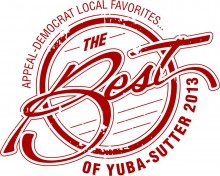This month the green room will be transformed into Jurassic Park over the course of 4 weeks. Not only will this inspire students to learn more about Dinosaurs, it will also create many teaching opportunities for all of the learning goals.
Week 1: Where & When did the Dinosaurs Live?
To start the month we will be introducing students to the amazing, prehistoric world that dinosaurs lived in. This includes teaching about the Mesozoic Era as well as introducing students to the concept of a timeline so that they will start to understand just how long ago 65 million years is! During week 1 we will begin transforming the Green Room into a physical representation of the terrain typically thought to be seen during the Mesozoic Era. By the end of the month, the classroom’s transformation into Jurassic Park will be complete! By the end of the week students should have a basic understanding of the Sub Theme Objectives as well having been exposed to multiple Number and Shape Opportunities.
Sub Theme Objectives:
- When and Where the Dinosaurs lived (i.e. during the Mesozoic Era and in many places around the globe). They should also be familiar with the concept of a timeline.
- Types of habitats - On land only (forests, jungles, plains etc.), since dinosaurs did not fly or live in the water (water- dwellers of that time were called “marine reptiles” and flyers were called “flying reptiles” not dinosaurs).
Week 2: Herbivorous Dinosaurs & Plant Life
For the rest of the month we will be teaching in the Jurassic Park created by the students! During week 2 students will be introduced to the life of an herbivorous dinosaur. We begin the second week by allowing each class to choose their own herbivorous dinosaur to learn about. Each class will create a herd of herbivores which will then be the vessels through which they learn. Students will follow their herd as it makes its way through Jurassic Park learning about different aspects of their herbivorous dinosaurs along the way (i.e. what they ate, where they lived, their predators, etc.). By the end of the week students should have a basic understanding of the Sub Theme Objectives as well as having been exposed to numerous Number and Shape Opportunities.
Sub Theme Objectives:
- Familiarity with the term herbivore.
- Familiarity with at least 2 traits of an herbivorous dinosaur (i.e. ate plants, had flat teeth, moved in herds, defensive adaptations, etc.)
Week 3: Omnivorous & Carnivorous Dinosaurs
During week 3 we will be introducing students to the lives of carnivorous and omnivorous dinosaurs. We will begin week 3 by allowing each class to choose an omnivore and a carnivore to study. We then start with a group project to create the omnivore and the carnivore they have decided to learn about. Students will follow their dinosaur as it makes its way through Jurassic Park learning about different aspects of their omnivore or carnivore along the way (i.e. what they ate, where they lived, their predators, etc.) By the end of the week your students should have a basic understanding of the Sub Theme Objectives as well having been exposed to multiple Number and Shape Opportunities.
Sub Theme Objectives:
- Be familiar with the terms carnivore and omnivore as well as some of their traits (i.e. sharp teeth, bi-pedal, therapods, etc.)
- Familiarity with 1 least on carnivore and 1 omnivore.
- The hunting behavior of 1 carnivore
Week 4: Paleontologists & Fossils
During week 4 we will be introducing students to the science of paleontology, the fossils found by paleontologists and theories regarding the disappearance of dinosaurs. A large amount of your focus for week 4 will be to guide our students through an understanding that most of what the world knows about dinosaurs comes from paleontologists and their work on fossils. By the end of the week students should have a basic understanding of the Sub Theme Objectives as well as having been exposed to multiple Number and Shape Opportunities.
Sub Theme Objectives:
- Be familiar with the term paleontology and what paleontologists do.
- Know what fossils are and some of the places around the world they have been found.
- Be familiar with two theories about what happened to the dinosaurs
Learning Goals
Life Science (level k)
2a Students know how to observe and describe similarities and differences in the appearance and behavior of plants and animals.
Number Sense (level k):
1.3 Know that the larger numbers describe sets with more objects in them than the smaller numbers have. This is not an exciting concept as it reads for any age we deliver this concept in a different package. The teaching of this learning goal is wrapped into lessons designed for more exciting theme based projects and games.
2.1 Use concrete objects to determine the answers to addition and subtraction problems (for two numbers that are each less than 10). This is an advanced concept so we make sure that each lesson plan adjusts the concept slightly so that it is age appropriate for the younger students.
Numbers and Shapes:
Recognition, Writing Numbers and Drawing Shapes Providing learning opportunities for numbers and shapes is an essential component of teaching in the Green Room. Students should be practicing their number and shape recognition skills on a daily basis.



